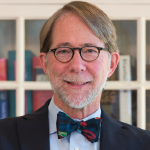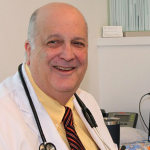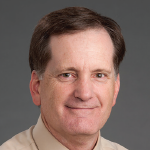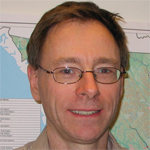
Lightspring / shutterstock.com
A key question many graduating rheumatology fellows face each year is: Are you interested in pursuing a career in academic medicine or in private practice? Although the two tracks are not mutually exclusive, it is true that juggling the demands of scholarly work, medical education and a busy clinical workload is by no means easy. Through the stories of several clinicians who have been successful in this balancing act, it is possible to see what career options are open to rheumatologists across the country and what lessons can be gleaned from their experiences.
Dr. Mease’s Story
Philip Mease, MD, a rheumatologist in practice at the Swedish Medical Center, Seattle, has an incredible story of coming into the research world somewhat later in his career. When he finished his rheumatology fellowship at the University of Washington in 1982, there was no such thing as a clinical track at his institution.
Although he had been involved in a fascinating case as a resident in which he and his team successfully used intravenous immunoglobulin to treat echovirus meningoencephalitis in a patient with dermatomyositis and X-linked agammaglobulinemia—which resulted in a publication in The New England Journal of Medicine1—his desire to practice clinical medicine and have a good work-life balance prompted Dr. Mease to join a multidisciplinary private practice. Indeed, he fondly recalls that his early career allowed for ample time spent with his family, including a day off each week simply to participate in activities with his children.
Several years later Dr. Mease was consulted for three patients with intense musculoskeletal pain and hypereosinophilia. One patient, a research nurse in a cancer center, had seen a bulletin from the Centers for Disease Control and Prevention (CDC) about patients with similar presentations who were all found to be taking a tryptophan-containing supplement. A new condition, called eosinophilia-myalgia syndrome linked to the ingestion of the dietary supplement L-tryptophan emerged, resulting in another publication for Dr. Mease and attention in the form of a widely viewed television interview.

Dr. Mease
Before long, Dr. Mease was approached by a pharmaceutical company that allowed him to help enroll patients in a clinical trial of infliximab and, later, to enroll patients in a trial of etanercept for the treatment of rheumatoid arthritis. Because he was also seeing patients with psoriatic arthritis and wondered about the potential efficacy of tumor necrosis factor inhibition in these patients, he wrote a two-page proposal to include these patients in an etanercept trial. The proposal was approved. He enrolled 60 patients, and this ended up being a successful trial published in The Lancet in July 2000.2
This was the beginning of what has become a substantial dual career for Dr. Mease as a private practice rheumatologist and one of the preeminent researchers in the field of spondyloarthritis, with more than 300 publications, many speaking engagements around the world, and the first Lifetime Achievement Award given to a rheumatologist by the National Psoriasis Foundation.
Dr. Mease points to a few key takeaways from his experiences. First, he notes that it is perfectly fine to come to research later in life, thereby allowing more time to spend with family early in one’s career. He explains that success in scholarship often involves a combination of serendipity, personal agency and industriousness. He also notes the importance of collaboration with like-minded individuals around the world, which has made much of his work possible and is even more essential during the current COVID-19 pandemic.
He points out that young rheumatologists should not be discouraged by the daunting challenge of how they will cover all financial aspects of balancing clinical work, which is compensated, and academic work, which is typically uncompensated. Often, having the opportunity to make up funds by consulting on clinical trials and providing lectures for continuing medical education sessions can help fill financial gaps.
Lastly, Dr. Mease notes that rheumatologists, as a general rule, are inquisitive souls and intellectually curious, and the benefits of marrying the ability to see patients in a busy practice while continuing scholarship helps prevent burnout.
Dr. Wallace’s Story

Dr. Wallace
Daniel Wallace, MD, FACP, MACR, a rheumatologist affiliated with Cedars-Sinai Medical Center, Beverly Hills, Calif., found a position at the intersection of private practice and academics during his fellowship at the University of California, Los Angeles (UCLA), where he conducted research and developed a close relationship with his mentor, Edmund Dubois, MD, FACP. At the time, Dr. Dubois had the largest cohort of lupus patients in the U.S. and was the principal editor of the only substantial textbook on lupus (Dubois’ Lupus Erythematosus and Related Syndromes, now in its ninth edition).3
Dr. Wallace assumed the practice of Dr. Dubois upon his passing in 1985, and since that time he has been the author of eight medical textbooks and nearly 450 peer reviewed manuscripts, and was named an ACR Master. He was recently the principal investigator for an NIH R01 grant and a Department of Defense grant, and was lead author of a clinical trial of baricitinib as treatment for lupus, published in The Lancet in 2018.4
Dr. Wallace notes that to be successful in balancing scholarly and clinical practice work one must be a bit obsessive-compulsive, with a clear schedule and plan that allows for completion of many tasks each day.
For graduating fellows, he notes that it is important to decide where in the country they want to live and to see what opportunities for academic and research work are available in those areas. Early on in one’s path, it is important to identify mentors and discuss where you want to be in 5–10 years in terms of career and lifestyle. It may also be very helpful to continue to be involved in teaching and working with trainees, something Dr. Wallace has done as associate director of the rheumatology fellowship program at Cedars-Sinai Medical Center. Indeed, Dr. Wallace notes that working with excellent colleagues and fellows allows for the sharing of responsibilities for patient care and provides an infrastructure for teamwork to help complete larger projects.
Pursuing scholarly work is not without its challenges, and Dr. Wallace explains that regulations, compliance issues and bureaucracy related to receiving grant funding and administering clinical trials can all be obstacles to success. He makes note of a particularly important and time-saving concept, futility analysis. During the course of a clinical trial, it is possible to assess if the treatment being tested is unlikely to beat the control intervention, thereby indicating that terminating the trial will save precious time and resources.
Dr. O’Rourke’s Story

Dr. O’Rourke
Not all private practice physicians assume their jobs straight out of fellowship. Kenneth O’Rourke, MD, a rheumatologist with Rheumatology Associates in Portland, Maine, joined this practice in 2017 after 25 years at Wake Forest School of Medicine, Winston-Salem, N.C., where he was professor of medicine and director of the rheumatology fellowship training program.
Dr. O’Rourke has been intricately involved in medical education and curriculum development across the country, including as chair of the Rheumatology Board Exam Committee through the American Board of Internal Medicine and as a member of the ACR’s Curriculum Task Force of the Committee on Education, and the Next Accreditation System Working Group of the Committee on Rheumatology Training and Workforce Issues (COTW), which created the Rheumatology Entrustable Physician Activities and Rheumatology Curricular Milestones.
He is also a founding member of the Carolinas Fellows Collaborative, whose work has included the creation of a competency-based curriculum of goals, objectives and linked evaluations for rheumatology fellowship training programs.
Among his many publications, he is a co-author of a forthcoming paper describing Rheumatology Milestones 2.0, which will be used in the coming years by every rheumatology fellowship training program in the U.S.5
Dr. O’Rourke says he has an advantage over graduating fellows in having made enough contacts with like-minded clinicians and educators over the years to have what can be called a community of practice. Thus, for a graduating fellow, it is important to figure out a surrogate, such as a faculty mentor at their training institution, who can provide suggestions for research projects or help network with contacts in the ACR and other organizations.
Dr. O’Rourke also notes that it is important to consider the infrastructure and support available to young clinicians as they look at practices where they may work. Does the practice have an existing relationship with a residency or fellowship program? Is there time or opportunity for educational conferences with colleagues or multidisciplinary meetings with other specialists? Dr. O’Rourke points out that, in private practice, there are fewer structured opportunities for teaching and education than in academia, but that simply means one must be diligent in seeking out these activities and availing oneself of local, state and national programs.
With his transition to private practice, Dr. O’Rourke has invested far greater time in direct teaching of internal medicine residents. Whereas his work at the university focused on teaching rheumatology fellows, he now relishes the chance to put the spark in resident trainees and inspire them to pursue careers in rheumatology.
In Sum
As all three rheumatologists can attest, balancing scholarship and private practice is not for the faint of heart, but when done well and by putting these lessons into practice, such a path can create excitement and intellectual rewards for an entire career.
Jason Liebowitz, MD, completed his fellowship in rheumatology at Johns Hopkins University, Baltimore, where he also earned his medical degree. He is currently in practice with Skylands Medical Group, N.J.
References
- Mease PJ, Ochs HD, Wedgwood RJ. Successful treatment of echovirus meningoencephalitis and myositis-fasciitis with intravenous immune globulin therapy in a patient with X-linked agammaglobulinemia. N Engl J Med. 1981 May 21;304(21):1278–1281.
- Mease PJ, Goffe BS, Metz J, et al. Etanercept in the treatment of psoriatic arthritis and psoriasis: A randomised trial. Lancet. 2000 Jul 29;356(9227):385–390.
- Wallace DJ, Hahn BH. Dubois’ Lupus Erythematosus and Related Syndromes, 9th edition. Philadelphia: Elsevier; 2019.
- Wallace DJ, Furie RA, Tanaka Y, et al. Baricitinib for systemic lupus erythematosus: A double-blind, randomised, placebo-controlled, phase 2 trial. Lancet. 2018 Jul 21;392(10143):222–231.
- Liebowitz JE, Torralba KD, Kolfenbach J, et al. Rheumatology Milestones 2.0: A roadmap for competency-based medical training of rheumatology fellows in the 21st century. Arthritis Care Res (Hoboken). 2020 Nov 12. doi: 10.1002/acr.24507. Epub ahead of print. PMID: 33181000.

